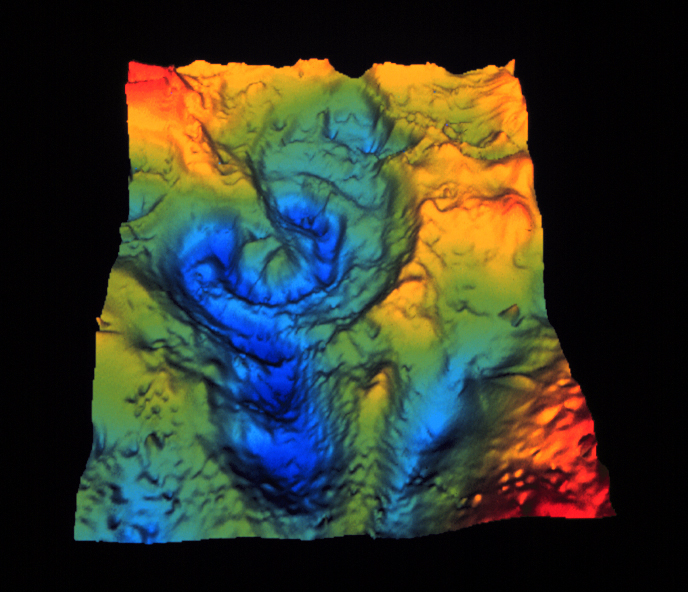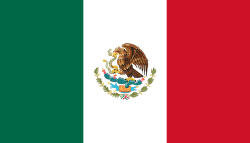Chicxulub2
- Original caption
This is a computer-generated gravity map image of the Chicxulub Crater found on Mexico's Yucatan Peninsula. The buried impact structure has been implicated in the mass extinction of life 65 million years ago and may be much larger than scientists first suspected.
New analyses of gravity measurements in the region have turned up evidence that the feature is a multiring basin with a fourth, outer ring about 300 kilometers in diameter. At this diameter, the Chixulub Basin represents one of the largest collisions in the inner solar system since the so-called "heavy bombardment" ended almost four billion years ago. (The period of heavy bombardment was caused by the impact of debris from the early formation of the solar system raining in on the newly formed planets.) The only comparable post-bombardment basin is the 280-kilometer-diameter Mead Basin on Venus.| This file is in the public domain in the United States because it was solely created by NASA. NASA copyright policy states that "NASA material is not protected by copyright unless noted". (See Template:PD-USGov, NASA copyright policy page or JPL Image Use Policy.) |  | |
 |
Warnings:
|
Relevantní obrázky
Relevantní články
Chicxulubský kráterChicxulubský kráter ([čikšulubský]) je obrovský, částečně pod zemí dochovaný impaktní kráter, který vznikl po dopadu (impaktu) velkého asteroidu Chicxulub. Tento uhlíkatý chodrit o průměru kolem 10 až 15 kilometrů dopadl asi před 66 miliony let do oblasti dnešního poloostrova Yucatán v Mexickém zálivu. Samotný kráter je široký zhruba 200 kilometrů a hluboký kolem jednoho kilometru, z větší části je dnes v moři a přibližně z třetiny na pevnině, kde v jeho epicentru leží mexické město Chicxulub, podle něhož jsou kráter i asteroid pojmenovány. Výzkum kráteru je významný pro ověření přední z teorií zdůvodňující vymírání na konci křídy. Kráter je v současnosti nejlépe zachovanou komplexní impaktní strukturou na povrchu Země. .. pokračovat ve čtení





